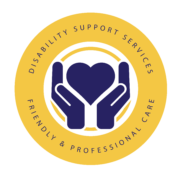Enhancing Accessibility and Mobility
Accessibility and mobility are fundamental pillars of independence, inclusion, and equality for individuals with disabilities. Yet, many face significant barriers in accessing essential services, navigating their environments, and participating fully in society. This article explores the critical importance of enhancing accessibility and mobility for individuals with disabilities, examining the challenges they face, the transformative impact of accessible environments, and effective strategies for breaking down barriers and promoting inclusion.
Understanding Accessibility and Mobility: Accessibility refers to the design of environments, products, and services to be usable by people of all abilities, including those with disabilities. Mobility encompasses the ability to move freely and independently within one’s environment, whether it be at home, in public spaces, or in transportation systems. For individuals with disabilities, accessibility and mobility are essential for accessing healthcare, education, employment, social participation, and recreational activities, as well as for maintaining a sense of autonomy and dignity.
Challenges Faced by Individuals with Disabilities: Individuals with disabilities face a myriad of challenges in accessing accessible environments and achieving mobility. Physical barriers such as steps, narrow doorways, and uneven terrain can impede mobility and restrict access to buildings and facilities. Communication barriers, such as lack of sign language interpreters or alternative formats, can hinder access to information and services. Attitudinal barriers, such as stigma, discrimination, and lack of awareness, can create social barriers and limit opportunities for inclusion and participation.
The Transformative Impact of Accessible Environments: Accessible environments have a transformative impact on the lives of individuals with disabilities, promoting independence, inclusion, and participation in all aspects of life. Accessible buildings, transportation systems, and public spaces enable individuals to move freely and navigate their environments with confidence and ease. Accessible communication and information ensure that individuals can access essential services, participate in decision-making processes, and engage fully in society. By breaking down barriers and promoting inclusion, accessible environments empower individuals with disabilities to live fulfilling and meaningful lives on their own terms.
Effective Strategies for Enhancing Accessibility and Mobility
There are several effective strategies for enhancing accessibility and mobility for individuals with disabilities:
- Universal Design: Adopt universal design principles to ensure that environments, products, and services are usable by people of all abilities without the need for adaptation or specialised design. Universal design focuses on creating environments that are intuitive, flexible, and inclusive, accommodating diverse needs and preferences.
- Accessibility Standards and Regulations: Implement and enforce accessibility standards and regulations to ensure that buildings, transportation systems, and public spaces comply with minimum accessibility requirements. This may include provisions for ramps, elevators, accessible signage, tactile paving, and designated parking spaces for individuals with disabilities.
- Assistive Technologies: Invest in assistive technologies and adaptive equipment to enhance mobility and independence for individuals with disabilities. This may include wheelchairs, mobility scooters, prosthetics, hearing aids, and communication devices that enable individuals to navigate their environments and access essential services with greater ease.
- Accessible Transportation: Improve access to transportation options for individuals with disabilities by ensuring that public transportation systems are accessible and accommodating. This may involve providing wheelchair-accessible vehicles, accessible boarding and disembarking facilities, and real-time information on accessibility features and service disruptions.
- Accessible Information and Communication: Ensure that information and communication materials are accessible to individuals with disabilities, including those with sensory impairments, cognitive disabilities, or limited literacy skills. This may involve providing information in alternative formats such as braille, large print, audio, or electronic formats, as well as offering sign language interpretation and captioning services.
- Disability Awareness and Training: Promote disability awareness and sensitivity training for staff, service providers, and the broader community to foster understanding, empathy, and respect for individuals with disabilities. Training programs can raise awareness of accessibility issues, teach communication strategies, and promote inclusive practices that accommodate diverse needs and preferences.
- Collaboration and Consultation: Collaborate with individuals with disabilities, disability advocacy organisations, and community stakeholders to identify barriers, assess accessibility needs, and develop inclusive solutions. Consultation with end-users ensures that accessibility initiatives are responsive to the lived experiences and priorities of individuals with disabilities, leading to more effective outcomes and greater inclusivity.
Enhancing accessibility and mobility is not only a matter of civil rights and social justice but also a fundamental aspect of human dignity and well-being. By breaking down barriers, promoting inclusion, and fostering independence, accessible environments empower individuals with disabilities to live fulfilling and meaningful lives, participate actively in society, and contribute their talents and perspectives to the world. As we continue to strive for greater accessibility and mobility for individuals with disabilities, let us embrace the principles of universal design, advocate for inclusive policies and practices, and work collaboratively to build a more accessible and inclusive world for all.

Leave a Reply
Want to join the discussion?Feel free to contribute!